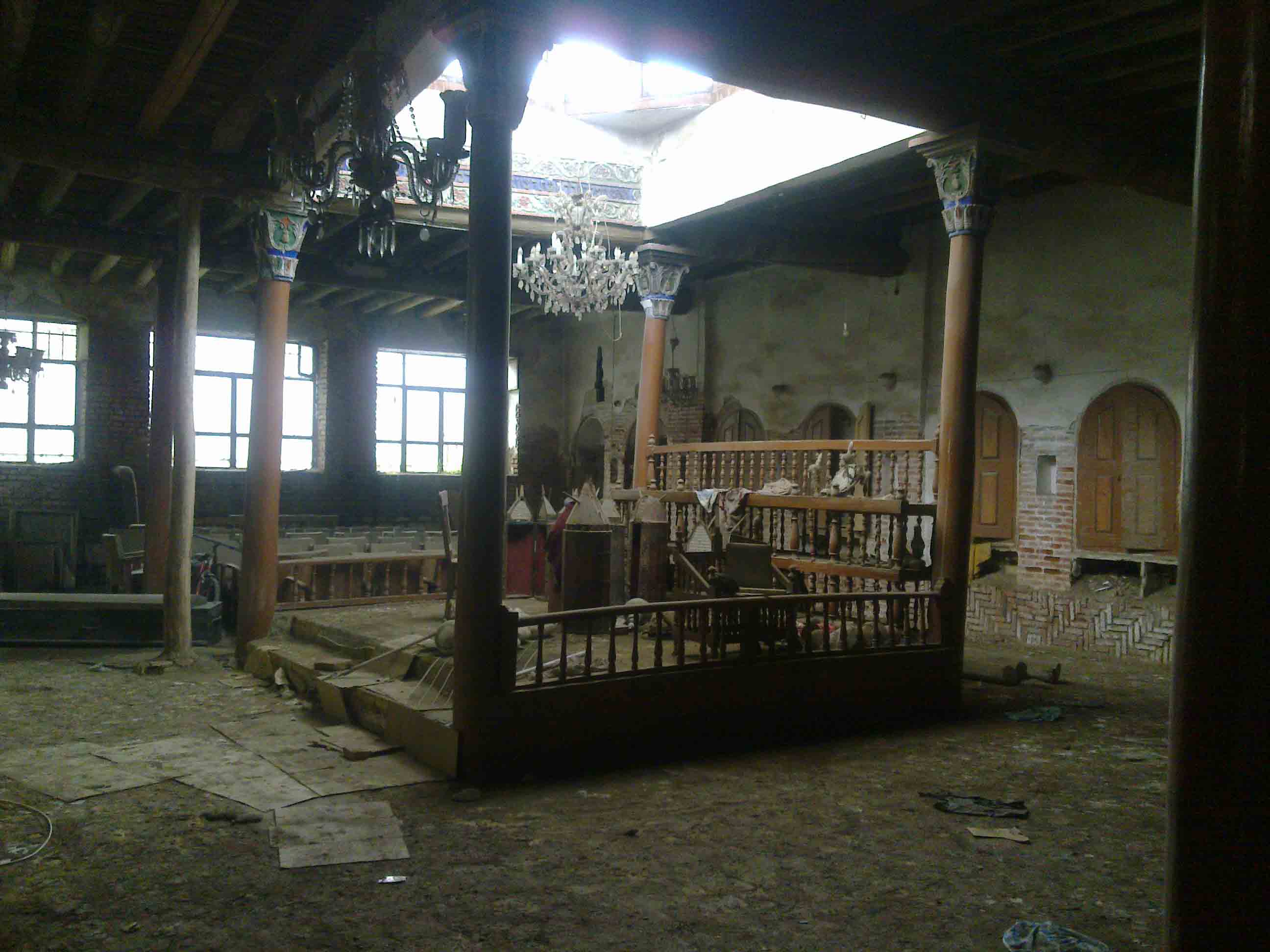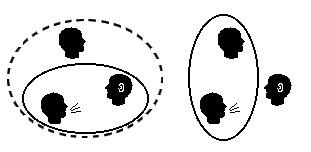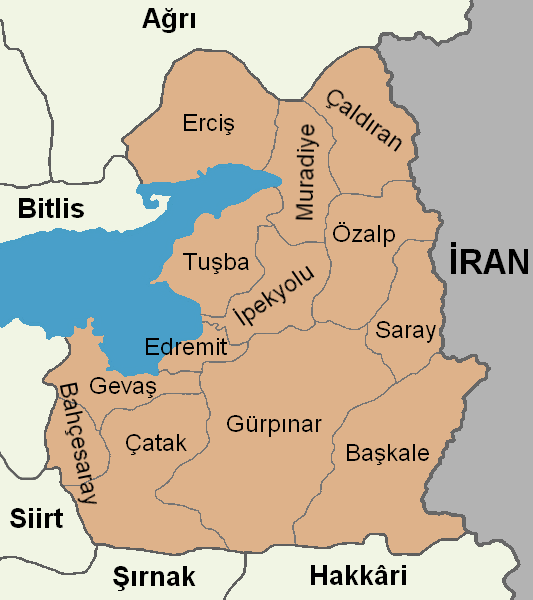|
Jewish Neo-Aramaic Dialect Of Urmia
The Jewish Neo-Aramaic dialect of Urmia, a dialect of Northeastern Neo-Aramaic, was originally spoken by Jews in Urmia and surrounding areas of Iranian Azerbaijan from Salmas to Solduz and into what is now Yüksekova, Hakkâri and Başkale, Van Province in eastern Turkey. Most speakers now live in Israel. The Names of the Language Lishan Didan is often referred to by scholars as Jewish (Persian) Azerbaijani Neo-Aramaic. Its speakers lived in Northern Iran in the cities and townships of Northern Iranian Azerbaijan, notably Urmia (briefly: ''Rezaiyeh''), Salmas (also: ''Shahpur''), and Naqadeh, Naghade (also: ''Solduz''). Lishan Didan (pronunciation: [li:ˈʃan di:ˈdan]) literally translates to "our language" (Interlinear gloss, morphological gloss: ''tongue-∅ GEN.1PL''.''EX''). The name of the language exhibits clusivity marking: a more exact translation of "Lishan Didan" would be "our language, but not yours." When one speaker of the language is speaking to another, they may ... [...More Info...] [...Related Items...] OR: [Wikipedia] [Google] [Baidu] |
Israel
Israel, officially the State of Israel, is a country in West Asia. It Borders of Israel, shares borders with Lebanon to the north, Syria to the north-east, Jordan to the east, Egypt to the south-west, and the Mediterranean Sea to the west. Israeli-occupied territories, It occupies the Occupied Palestinian territories, Palestinian territories of the West Bank in the east and the Gaza Strip in the south-west. Israel also has a small coastline on the Red Sea at its southernmost point, and part of the Dead Sea lies along its eastern border. Status of Jerusalem, Its proclaimed capital is Jerusalem, while Tel Aviv is the country's Gush Dan, largest urban area and Economy of Israel, economic center. Israel is located in a region known as the Land of Israel, synonymous with the Palestine (region), Palestine region, the Holy Land, and Canaan. In antiquity, it was home to the Canaanite civilisation followed by the History of ancient Israel and Judah, kingdoms of Israel and Judah. Situate ... [...More Info...] [...Related Items...] OR: [Wikipedia] [Google] [Baidu] |
Urmia
Urmia (; ) is the largest city in West Azerbaijan Province of Iran. In the Central District of Urmia County, it is capital of the province, the county, and the district. The city is situated near the borders of Iran with Turkey and Iraq. The city lies at an altitude of above sea level along the Shahar River on the Urmia Plain. Lake Urmia, one of the world's largest salt lakes, lies to the east of the city, and the border with Turkey lies to the west. The city is the trading center for a fertile agricultural region where fruits (especially apples and grapes) and tobacco are grown. Even though the majority of the residents of Urmia are Muslims, the Christian history of Urmia is well preserved and is especially evident in the city's many churches and cathedrals. An important town by the 9th century, the city has had a diverse population which has at times included Muslims (Shias and Sunnis), Christians (Catholics, Protestants, Nestorians, and Orthodox), Jews, Baháʼ� ... [...More Info...] [...Related Items...] OR: [Wikipedia] [Google] [Baidu] |
Targum
A targum (, ''interpretation'', ''translation'', ''version''; plural: targumim) was an originally spoken translation of the Hebrew Bible (also called the ) that a professional translator ( ''mǝṯurgǝmān'') would give in the common language of the listeners when that was not Biblical Hebrew. This had become necessary near the end of the first century BCE, as the common language was Aramaic and Hebrew was used for little more than schooling and worship. The translator frequently expanded his translation with paraphrases, explanations and examples, so it became a kind of sermon. Writing down the targum was initially prohibited; nevertheless, some targumitic writings appeared as early as the middle of the first century. They were not recognized as authoritative by the religious leaders. Some subsequent Jewish traditions, beginning with the Jews of Lower Mesopotamia, accepted the written targumim as authoritative translations of the Hebrew scriptures into Aramaic. Today, the com ... [...More Info...] [...Related Items...] OR: [Wikipedia] [Google] [Baidu] |
Hebrew Language
Hebrew (; ''ʿÎbrit'') is a Northwest Semitic language within the Afroasiatic language family. A regional dialect of the Canaanite languages, it was natively spoken by the Israelites and remained in regular use as a first language until after 200 CE and as the liturgical language of Judaism (since the Second Temple period) and Samaritanism. The language was revived as a spoken language in the 19th century, and is the only successful large-scale example of linguistic revival. It is the only Canaanite language, as well as one of only two Northwest Semitic languages, with the other being Aramaic, still spoken today. The earliest examples of written Paleo-Hebrew date back to the 10th century BCE. Nearly all of the Hebrew Bible is written in Biblical Hebrew, with much of its present form in the dialect that scholars believe flourished around the 6th century BCE, during the time of the Babylonian captivity. For this reason, Hebrew has been referred to by Jews as '' ... [...More Info...] [...Related Items...] OR: [Wikipedia] [Google] [Baidu] |
Targum
A targum (, ''interpretation'', ''translation'', ''version''; plural: targumim) was an originally spoken translation of the Hebrew Bible (also called the ) that a professional translator ( ''mǝṯurgǝmān'') would give in the common language of the listeners when that was not Biblical Hebrew. This had become necessary near the end of the first century BCE, as the common language was Aramaic and Hebrew was used for little more than schooling and worship. The translator frequently expanded his translation with paraphrases, explanations and examples, so it became a kind of sermon. Writing down the targum was initially prohibited; nevertheless, some targumitic writings appeared as early as the middle of the first century. They were not recognized as authoritative by the religious leaders. Some subsequent Jewish traditions, beginning with the Jews of Lower Mesopotamia, accepted the written targumim as authoritative translations of the Hebrew scriptures into Aramaic. Today, the com ... [...More Info...] [...Related Items...] OR: [Wikipedia] [Google] [Baidu] |
Clusivity
In linguistics, clusivity is a grammatical distinction between ''inclusive'' and ''exclusive'' first-person pronouns and verbal morphology, also called ''inclusive " we"'' and ''exclusive "we"''. Inclusive "we" specifically includes the addressee, while exclusive "we" specifically excludes the addressee; in other words, two (or more) words that both translate to "we", one meaning "you and I, and possibly someone else", the other meaning "me and some other person or persons, but not you". While imagining that this sort of distinction could be made in other persons (particularly the second) is straightforward, in fact the existence of second-person clusivity (you vs. you and they) in natural languages is controversial and not well attested. While clusivity is not a feature of the English language, it is found in many languages around the world. The first published description of the inclusive-exclusive distinction by a European linguist was in a description of languages of Peru in ... [...More Info...] [...Related Items...] OR: [Wikipedia] [Google] [Baidu] |
Interlinear Gloss
In linguistics and pedagogy, an interlinear gloss is a gloss (series of brief explanations, such as definitions or pronunciations) placed between lines, such as between a line of original text and its translation into another language. When glossed, each line of the original text acquires one or more corresponding lines of transcription known as an interlinear text or interlinear glossed text (IGT) an interlinear for short. Such glosses help the reader follow the relationship between the source text and its translation, and the structure of the original language. In its simplest form, an interlinear gloss is a literal, word-for-word translation of the source text. History Interlinear glosses have been used for a variety of purposes over a long period of time. One common usage has been to annotate bilingual textbooks for language education. This sort of interlinearization serves to help make the meaning of a source text explicit without attempting to formally model the structur ... [...More Info...] [...Related Items...] OR: [Wikipedia] [Google] [Baidu] |
Naqadeh
Naqadeh () is a city in the Central District of Naqadeh County, West Azerbaijan province, Iran, serving as capital of both the county and the district. Etymology Naqadeh is the current name of the town (and county). The former name, known as Solduz (also spelled Sulduz, in Kurdish: Sundus), in reference to the Mongol Sulduz tribe, may have replaced an older name (now lost) during the reign of the Ilkhanid ruler Ghazan in 1303. History In 1303, during the reign of Ilkhanid ruler Ghazan, the area comprising Naqadeh County was distributed in fiefs. According to the orientalist Vladimir Minorsky (died 1966), citing the 16th-century Kurdish prince and writer Sharafkhan Bidlisi, during the rule of the Turkoman Aq Qoyunlu and Qara Qoyunlu (in about the 15th century), the Kurds of the Mukri occupied the county of Naqadeh, and its old inhabitants were most likely "reduced to servitude". Minorsky, citing a mutilated and undated part of Bidlisi's work, narrates that a certain Budak ... [...More Info...] [...Related Items...] OR: [Wikipedia] [Google] [Baidu] |
Eastern Turkey
The Eastern Anatolia region () is a geographical region of Turkey. The most populous province in the region is Van Province. Other populous provinces are Malatya, Erzurum and Elazığ. It is bordered by the Black Sea Region and Georgia in the north, the Central Anatolia Region in the west, the Mediterranean Region in the southwest, the Southeastern Anatolia Region and Iraq in the south, and Armenia, Azerbaijan, and Iran in the east. The region encompasses most of Western Armenia and had a large population of indigenous Armenians until the Armenian genocide. The Anatolia peninsula historically never encompassed what is now called "Eastern Anatolia" which was, instead, referred to as the Armenian highlands. It was renamed by the newly founded Turkish Republic in the 1920s. This has been seen as an attempt by Turkey to erase the Armenian history of the region. It has the highest average altitude, largest geographical area, and lowest population density of the seven Turki ... [...More Info...] [...Related Items...] OR: [Wikipedia] [Google] [Baidu] |
Van Province
Van Province (, , Armenian: Վանի մարզ) is a province and metropolitan municipality in the Eastern Anatolian region of Turkey, between Lake Van and the Iranian border. Its area is 20,921 km2, and its population is 1,128,749 (2022). Its adjacent provinces are Bitlis to the west, Siirt to the southwest, Şırnak and Hakkâri to the south, and Ağrı to the north. The capital of the province is the city of Van, with a population of 525,016 at the end of 2022. The second-largest city is Erciş, with 92,945 inhabitants at end 2022. The province was part of ancient province of Vaspurakan and is considered to be one of the cradles of Armenian civilization. Before the Armenian genocide, Van Province was one of the six Armenian vilayets. A majority of the population of the province is Kurdish. Demographics The province is mainly populated by Kurds and considered part of Turkish Kurdistan. The province had a significant Christian Armenian population until the genocide ... [...More Info...] [...Related Items...] OR: [Wikipedia] [Google] [Baidu] |
Başkale
Başkale (, ) is a municipality and district of Van Province, Turkey. Its area is 2,727 km2, and its population is 44,168 (2022). The municipality Başkale was established in 1937. In the local elections of March 2019 Erkan Acar from the Peoples' Democratic Party (HDP) was elected mayor. Geography Başkale is situated west of the Turkey-Iran border. of the national border is on the east and north-east of the Başkale district. Başkale shares district borders with Yüksekova District of Hakkari Province to the south, Saray and Özalp districts of Van Province to the north, and Gürpınar district of Van Province to the west. Başkale is situated 2460 metres above sea level, in the valley of the Great Zab River (Zapsuyu), and the town stands on the eastern slope of the south-eastern Taurus Mountains. The majority of the Başkale district is mountainous. The agricultural portion is only , approximately 14% of the total area. Başkale is enclosed by Mount (Yiğit) ... [...More Info...] [...Related Items...] OR: [Wikipedia] [Google] [Baidu] |






